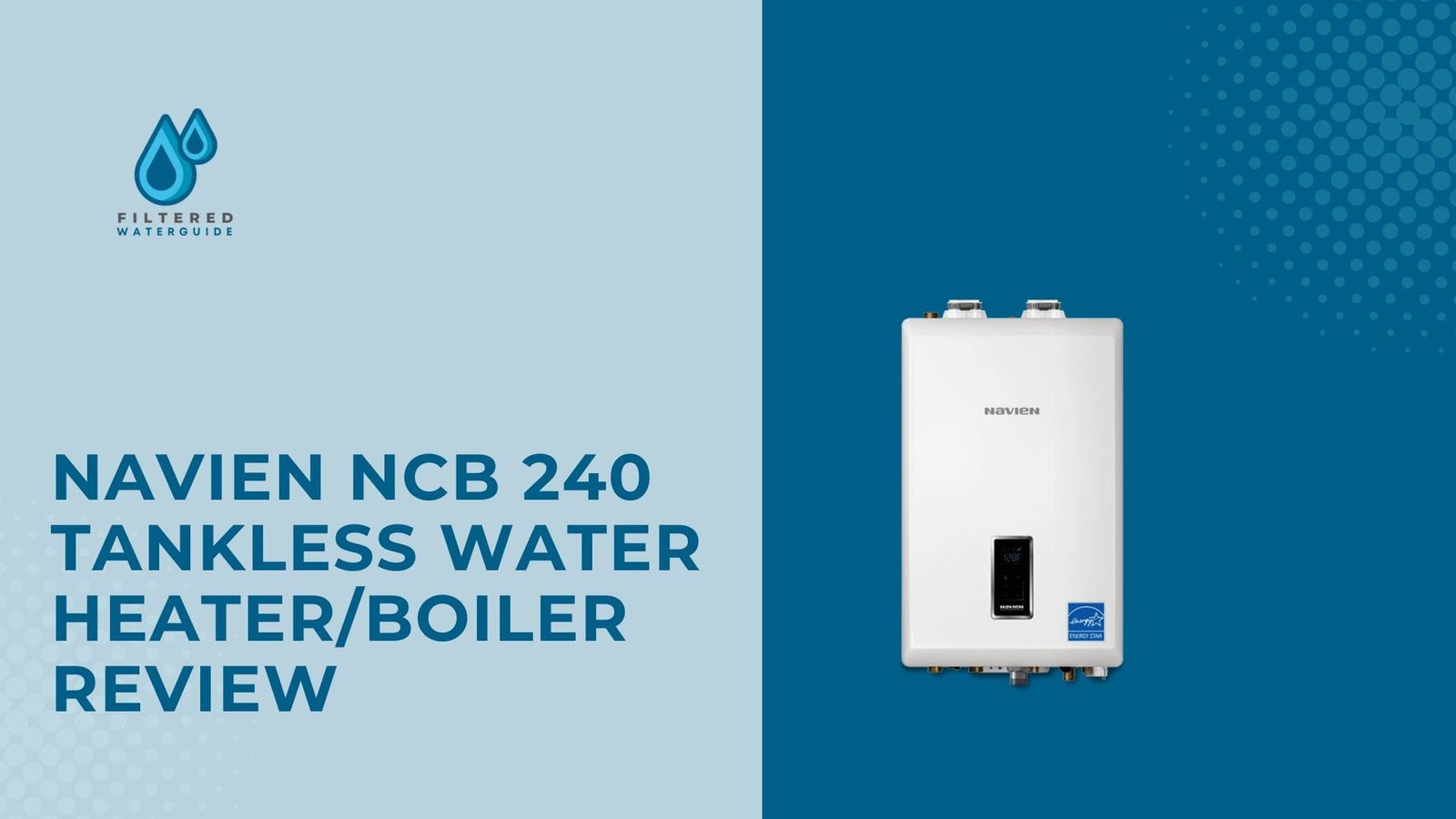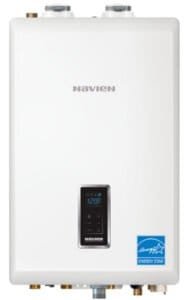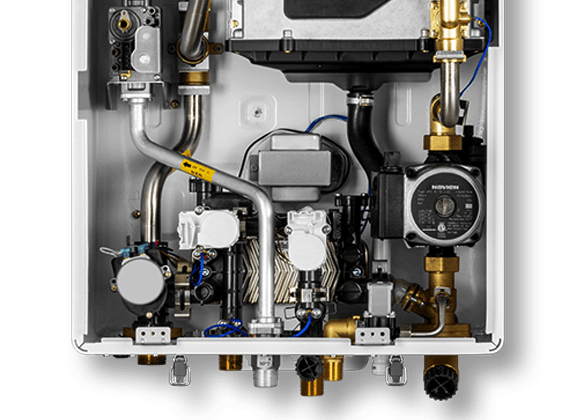Filteredwaterguide.com is supported by readers. If you purchase through referral links on our site, we make a commission at no extra cost to you. Learn more.

When it comes to modern water heating solutions, we’ve witnessed a significant shift in what homeowners and businesses prefer.
Our extensive hands-on testing of tankless water heaters has shown that compact, efficient units are rapidly replacing traditional tank systems.
The Navien NCB 240 Combo Boiler and Heater has generated substantial buzz in the market.
Drawing from our professional plumbing background and rigorous testing protocols, we’ll share our detailed findings about this combination boiler and water heater.

In our professional assessment, what sets this Navien unit apart from standard water heaters is its innovative dual functionality as both a water heater and hydronic system boiler.
Modern homes often struggle with limited space for traditional water heating systems, particularly when accommodating a hydronic heating setup.
During our installations, we’ve found that conventional tank systems not only consume valuable space but also bring challenges like proper ventilation requirements, sediment accumulation, and increased energy costs.
The Navien NCB 240 Tankless Water Heater addresses these challenges head-on with its smart design.

After extensive testing and real-world installations, we’ve identified the key advantages and limitations of the Navien NCB 240.
Here’s what our plumbing experts discovered:
While the process of making activated carbon remains the same, not all carbon filters are created equal. These are the different types of carbon filters, how they work, and what contaminants they’re best at removing.
Important Update: The Navien NCB model is currently unavailable. Check out our carefully selected alternative below:
Through our hands-on experience with residential installations, we’ve found the Navien combo boilers to be particularly effective for homes, condos, apartments, and office spaces with hydronic heating systems.
The unit’s engineering quality stands out in daily operation.
We’re particularly impressed by how Navien’s heat exchanger technology, combined with streamlined venting and waterline connections, makes this wall-mounted system a practical choice for modern homes.
For homeowners seeking an efficient dual-purpose solution, our testing confirms this system excels at both space and water heating.
While the NCB 240e has more complex internal components than single-purpose units, the installation process is surprisingly straightforward.
However, based on our professional experience, we strongly recommend professional HVAC installation over DIY attempts, despite the unit’s user-friendly design.
Our research into customer experiences revealed mixed feedback about the Navien Boiler combo. Here are some notable customer insights:
Our hands-on testing revealed that while the Navien tankless water heater incorporates impressive technology, it faces strong competition in today’s market. Let’s break down what makes this system stand out:
In our testing, we found the Hydro Shark® Modular Panel system offers similar functionality with both boiler and hot water capabilities. The main difference? It uses two separate units, requiring more wall space. Our team noted comparable pricing to the Navien NCB 240e, varying by heating area requirements. Worth mentioning: Stiebel provides both natural gas and electric options.
Rinnai’s lineup caught our attention with its wide range of options. Their RUR model series matches the NCB 240’s stainless steel heat exchangers but comes in various capacities. We particularly liked their compact design and exterior installation options, all within a similar price range.
Our testing showed the Ecosmart Eco 27 delivers impressive performance, heating up to 6.5 gallons per minute. However, we found it’s specifically designed as a whole-house water heater rather than a boiler system. This means you’ll need a separate hydronic boiler and extra wall space. The lower price point reflects its more focused functionality compared to the Navien NCB 240.
After extensive real-world testing and evaluation, we’ve reached a mixed verdict on the Navien NCB 240. While the engineering and design show promise, our research into customer experiences raised some red flags around support and durability.
The combination of high upfront costs and mandatory professional installation makes us hesitant to recommend this unit for most homeowners. Despite marketing claims about easy setup, we found that many functionality issues stemmed from installation problems.
While competitors might not match every spec for flow capacity or size, we believe their advantages in cost, maintenance requirements, and customer satisfaction make them more compelling choices.
Our Final Recommendation: Before investing in the Navien system, we strongly suggest exploring our carefully selected alternatives in our comprehensive review here.